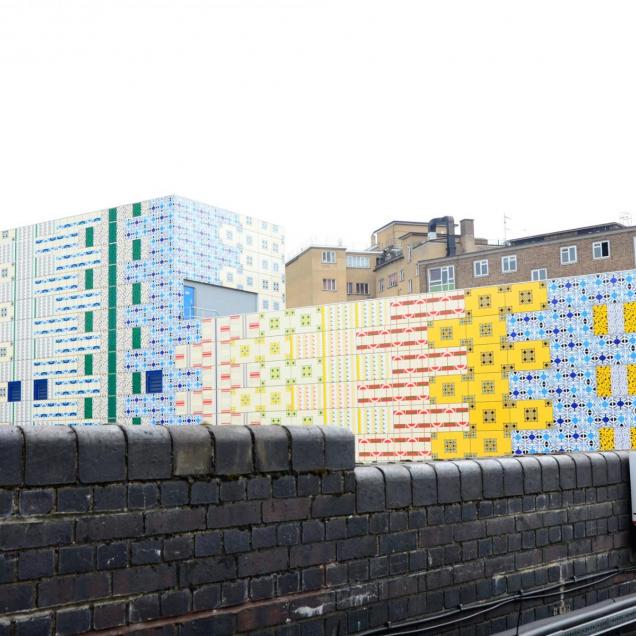

Artist Jacqueline Poncelet has covered a monolithic substation in glossy, colourful patterns that reflect the local history and culture
Descending into London from the Westway, passing by on Marylebone Road, or looking up from the Underground platforms at Edgware Road, bands of green, yellow, blue and cream catch the eye - a series of stepped blocks wrapped in bright, glossy plaques of vitreous enamel. This new, permanent work by Jacqueline Poncelet, over 1,500sq m, is intended to emphasise each of these viewpoints, while providing a different experience to each viewer. Reflected in the patterns are echoes of the trellised overhang of the Edgware Road platforms, the pattern of local roads and canals, leaves and plants, recalling the area's market-garden history, as well as more contemporary visual symbols.
The area, Poncelet says, is "riddled with different ways of moving around";
the confluence of infrastructures, in turn, reflects the confluence of people, recent and older immigrants, visible at different times and places.
Transport for London originally commissioned architect Pringle Richards
Sharratt to design three new substations to supply the extra power required by new rolling stock on the Metropolitan, Circle, District and Hammersmith & City Lines. It rapidly became clear that, in the case of Edgware Road, such a large new building would be constrained in its design by engineering requirements, and that it would face a battle for planning approval.
This is a common dilemma facing architects of contemporary industrial
infrast ructure, which no longer possesses its own aesthetic. All forms of machinery, from transformers to switching gears to advanced data servers, are reduced to identical, pre-built units that betray nothing of their function, and the architect is faced with the choice of a bland box or an ornament.
The solution was to bring in Art on the Underground, the decade-old body responsible for interventions across the tube system, from pocket-map covers to platform-scale installations, and, increasingly, permanent works that form part of the fabric of the network. Poncelet's work was chosen from a shortlist of four for its promise not of a given object, but of a research process that would incorporate multiple aspects of the station, the network, the local area and its history into the final design.
For reasons of security, TfL is somewhat coy about the contents of the building itself, although the details are easily discoverable online. As a result, Poncelet's work can also be viewed as a kind of dazzle pattern or antiflage, designed to attract the eye, and scatter it; breaking up the heavy bulk of the blind building and also obscuring its purpose. It is beautiful and also emblematic of the conflicting demands of the network and the built environment.
© Icon 2013